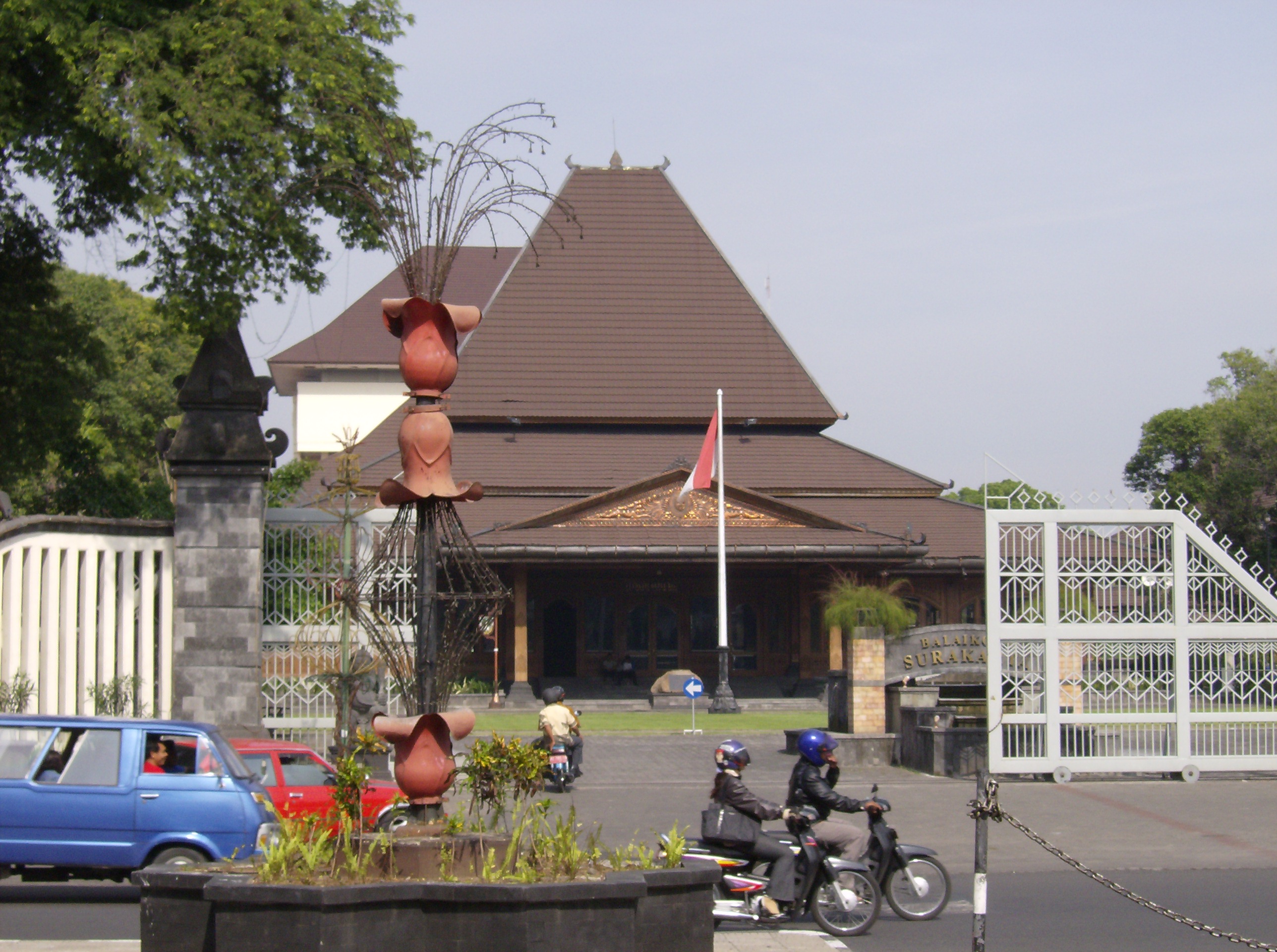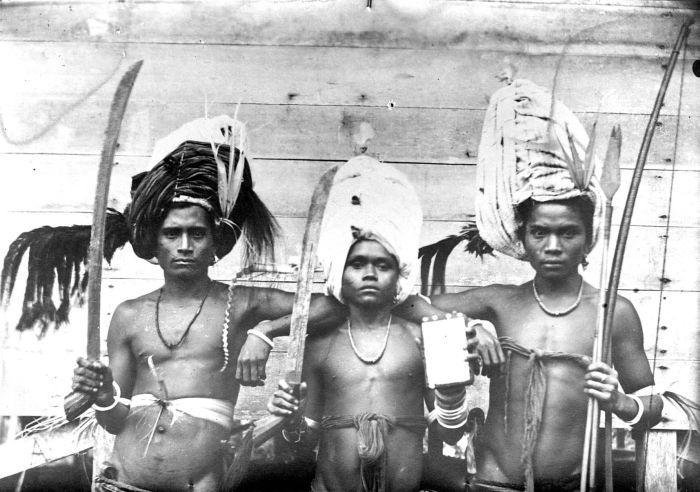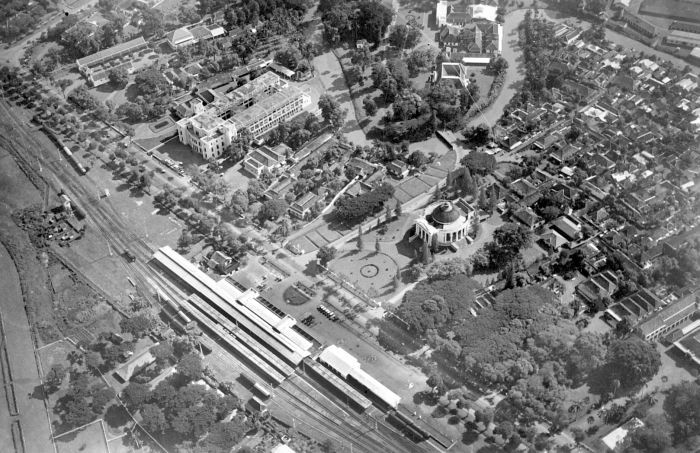|
Slamet Riyadi
Brigadier General Ignatius Slamet Rijadi (Perfected Spelling: Ignatius Slamet Riyadi; 26 July 1927 – 4 November 1950) was an Indonesian soldier. Rijadi was born in Surakarta, Central Java, to a soldier and a fruit seller. Rijadi was "Sold" to his uncle and renamed as a toddler to cure his illnesses, Rijadi was raised at his parents' home and studied at Dutch-run schools. After the Japanese occupation of the Dutch East Indies, Rijadi studied at a Japanese-run sailor's academy and worked for them upon graduation; he abandoned the Japanese army towards the end of World and assisted resistance operations for the rest of the occupation. After Indonesia's independence on 17 August 1945, Rijadi led Indonesian forces in the Surakarta area during the revolution against the returning Dutch. Starting with a guerrilla campaign, by 1947, when he fought against Dutch offensives in Ambarawa and Semarang, he was in charge of the 26th Regiment. During a second Dutch offensive, Rijad ... [...More Info...] [...Related Items...] OR: [Wikipedia] [Google] [Baidu] |
Surakarta
Surakarta ( jv, ꦯꦸꦫꦏꦂꦠ), known colloquially as Solo ( jv, ꦱꦭ; ), is a city in Central Java, Indonesia. The 44 km2 (16.2 sq mi) city adjoins Karanganyar Regency and Boyolali Regency to the north, Karanganyar Regency and Sukoharjo Regency to the east and west, and Sukoharjo Regency to the south. On the eastern side of Solo lies Solo River (Bengawan Solo). Its built-up area, consisting of Surakarta City and 59 districts spread over seven regencies ("Greater Solo Area", formerly Special Region of Surakarta), was home to 3,649,254 inhabitants as of 2010 census, around half million of which reside in the city proper. Surakarta is the birthplace of the current President of Indonesia, Joko Widodo. He served as Mayor of Surakarta from 2005 to 2012. History Hominid habitation in the region of Surakarta is evidenced from roughly one million years ago, the age of the "Java Man" skeleton found 80 kilometers upstream. Another famous early hominid from this area is called ... [...More Info...] [...Related Items...] OR: [Wikipedia] [Google] [Baidu] |
Republic Of South Maluku
South Maluku, also South Moluccas, officially the Republic of South Maluku, was an unrecognised secessionist republic that claimed the islands of Ambon, Buru, and Seram, which make up the Indonesian province of Maluku. Dutch conquest exerted colonial control across the archipelago in the 19th century, establishing a unitary administration. The borders of present-day Indonesia were formed through colonial expansion finalised in the 20th century. After the occupation by the Japanese Empire during World War II ended in 1945, nationalist leaders on Java unilaterally declared Indonesian independence. Early organised indigenous resistance came from the South Moluccas with support and aid from the Dutch government and military. The South Moluccan rebels initially clung on to an early post-colonial treaty prescribing a federal form of statehood. When that treaty, agreed between the Dutch government and the Indonesian government in December 1949, was broken, they unilaterally declar ... [...More Info...] [...Related Items...] OR: [Wikipedia] [Google] [Baidu] |
Mount Merapi
Mount Merapi, ''Gunung Merapi'' (literally Fire Mountain in Indonesian and Javanese), is an active stratovolcano located on the border between the province of Central Java and the Special Region of Yogyakarta, Indonesia. It is the most active volcano in Indonesia and has erupted regularly since 1548. It is located approximately north of Yogyakarta city which has a population of 2.4 million, and thousands of people live on the flanks of the volcano, with villages as high as above sea level. Smoke can often be seen emerging from the mountaintop, and several eruptions have caused fatalities. A pyroclastic flow from a large explosion killed 27 people on 22 November 1994, mostly in the town of Muntilan, west of the volcano. Another large eruption occurred in 2006, shortly before the Yogyakarta earthquake. In light of the hazards that Merapi poses to populated areas, it was designated as one of the Decade Volcanoes. On the afternoon of 25 October 2010, Merapi erupted on its sout ... [...More Info...] [...Related Items...] OR: [Wikipedia] [Google] [Baidu] |
Kempeitai
The , also known as Kempeitai, was the military police arm of the Imperial Japanese Army from 1881 to 1945 that also served as a secret police force. In addition, in Japanese-occupied territories, the Kenpeitai arrested or killed those suspected of being anti-Japanese. While institutionally part of the army, the Kenpeitai also discharged military police functions for the Imperial Japanese Navy under the direction of the Admiralty Minister (although the IJN had its own much smaller Tokkeitai), those of the executive police under the direction of the Home Minister and those of the judicial police under the direction of the Justice Minister. A member of the Kenpeitai corps was called a ''kenpei'' (憲兵). History The Kenpeitai was established in 1881 by a decree called the , figuratively "articles concerning gendarmes". Its model was the National Gendarmerie of France. Details of the Kenpeitai's military, executive, and judicial police functions were defined by the ''Ke ... [...More Info...] [...Related Items...] OR: [Wikipedia] [Google] [Baidu] |
Central Jakarta
Central Jakarta ( id, Jakarta Pusat) is one of the five administrative cities () which form the Special Capital Region of Jakarta. It had 902,973 inhabitants according to the 2010 censusBiro Pusat Statistik, Jakarta, 2011. and 1,056,896 at the 2020 census. Central Jakarta is not self-governed and does not have a city council, hence it is not classified as a proper municipality. Central Jakarta is the smallest in area and population of the five cities of Jakarta. It is both the administrative and political center of Jakarta and Indonesia. Central Jakarta contains a number of large international hotels and major landmarks such as Hotel Indonesia. Districts Central Jakarta is bounded by North Jakarta to the north, East Jakarta to the east, South Jakarta to the south, and West Jakarta to the west. It is subdivided into eight districts (), listed below with their areas and their populations at the 2010 census. Demographics Central Jakarta has an average of 20,177 residents per s ... [...More Info...] [...Related Items...] OR: [Wikipedia] [Google] [Baidu] |





